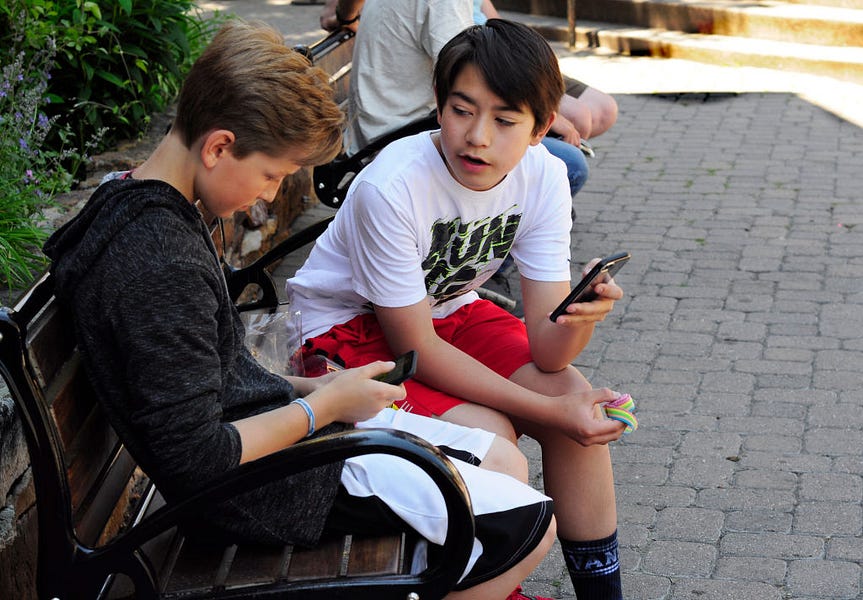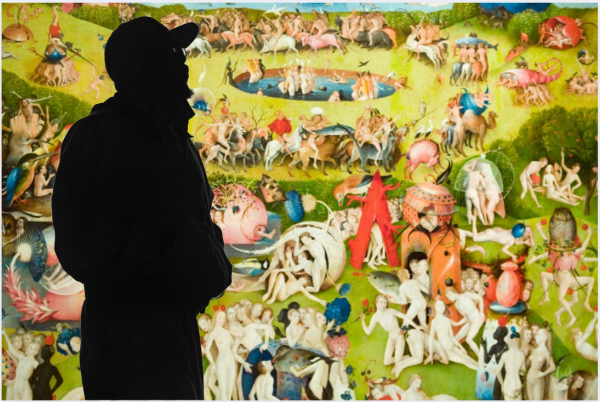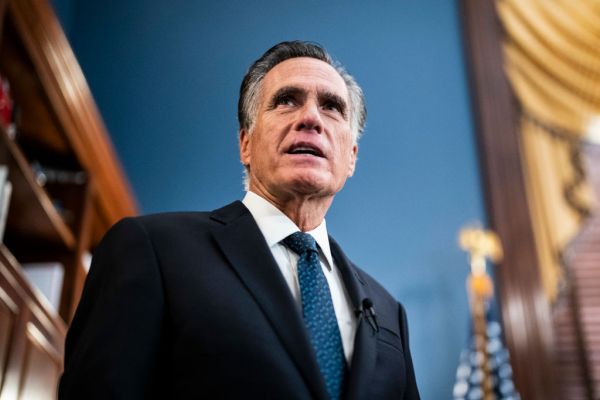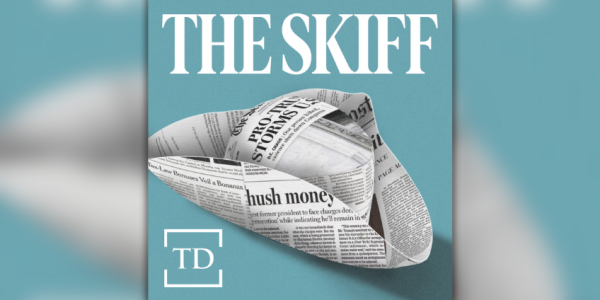There was a time, not so long ago, when technology seemed all but certain to strengthen civic life. I wrote a whole book predicting the internet would collapse the distance between us; citizens would rally around common causes and community projects; email would bring the voices of regular people into the halls of power. Connection and engagement were the buzzwords of the early internet age. At last, we had the tools to build an Athenian agora on a continental scale, and the soft screen-glow of digital democracy would light the way into the 21st century!
The outlook has evolved somewhat since then. Instead of citizens assemblies, we got Twitter. Instead of Mr. Smith Zooms to Washington, we got Black Mirror and the Capitol riot. Loneliness, partisanship, and distrust are all on the rise, and parenting books are filled with advice about how to save children from the ravages of digital addiction. So much for my celebration of “just-in-time social capital.”
Against our dystopian zeitgeist, Richard Culatta’s Digital for Good: Raising Kids to Thrive in an Online World feels almost like a throwback, a nostalgic reverie for a time when online life promised infinite potential for those savvy enough to embrace it. “Technology brings an unprecedented level of convenience and personalization, and it will allow our children to do more, learn more, create more, and connect more than any of us could have ever imagined,” Culatta writes in the opening pages. “The limitations of the physical world will not shape or constrain the design of our children’s life event the way they did mine or yours.”
That sounds like the rhetoric of a thousand bygone TED Talks, but Culatta is not an old-school tech evangelist. He’s clear-eyed about where our utopian hopes went off the rails, and he’s earnestly optimistic about the capacity of smarter teaching and parenting to get us back on track.
“We have spent the last two decades excitedly finding ways to migrate all kinds of experiences to the digital world, but we haven’t stopped to ask how we will preserve our civil society as it also migrates there,” he writes. “If we can’t figure out how to create a generation of positive, productive, and civil online inhabitants, our amazing parallel universe will eventually turn into one in which none of us will want to live— and it will be too late to migrate back.”
Blessedly, Culatta argues, the digital world is still very much in its adolescence. It’s not too late to reconsider the choices we’ve made, or to prepare the first crop of digital natives to make better ones.
For the last four years, Culatta has led the International Society for Technology in Education, and he has a deep frustration with the just-say-no approach to young people and digital life. Policing screen time, confiscating phones, and banning apps does nothing to help prepare kids for the inevitability of venturing online. We need to push students to make distinctions about the quality of their digital experiences, to give them a vision of what they can do instead of an endless list of things they shouldn’t do.
Mindless doom-scrolling on Twitter is very different from collaborating with friends on an elaborate dance video, and parents and educators need to get better at helping students make those value judgments. Culatta recalls a sharp divide during his time working for the Department of Education between teachers who use technology for passive consumption—watching videos, killing class time with repetitive games—and those using it for creative projects. “For the passive users, technology was very similar to a portable TV. For the active technology users, their device was more analogous to a set of paintbrushes or building blocks.”
This strikes me as especially important because of the way adults in our society often fail to make these distinctions. Rage addicts shouting at strangers on Facebook is bad enough, but what makes it truly destructive is that many of those people think they’re engaging in civic life. If they were just playing Grand Theft Auto all evening, at least they’d know it was wasted time. But the weak imitation of public engagement—what DeNora Getachew of DoSomething.org calls “slacktivism”—saps energy for real democratic organizing.
Drawing people away from destructive online behavior will take a shift in social norms. Culatta suggests, in effect, a form of broken windows policing for our digital spaces. Just as subway graffiti begets mugging, trolling for the lulz paves the way to riotous conspiracy. By letting low-grade harassment go unchecked in the online world, accepting it as a foundational part of internet culture, we’re letting our digital lives go to seed in ways we don’t have to. We need to treat digital platforms like the shared spaces they are, with expectations of behavior that are clear and well-policed. “Viewing our online activity as participation in a virtual community, and not just the random surfing of websites, is a critically important first step to improving the quality of our life there,” Culatta writes. “We should feel involvement and ownership as members of a given virtual community and be keenly aware of the tendency toward tragedy of our virtual commons.”
This is a fundamentally conservative argument, one that emphasizes the role of individuals in taking responsibility for the way they interact and cultivate public spaces. Norms of behavior are hard to impose from the top down; they have to be created organically, adopted and maintained by the community at large. “This is about creating a digital culture at home and at school,” Culatta argues, and we have a narrow window to teach young people to do it well. “If we choose not to reset expectations, our existing haphazard norms will continue, and we will have lost a once-in-a-generation opportunity to rethink how we are preparing the next generation of digital citizens.”
Unlike so many social-media critics, Culatta is admirably concrete. He wants to see families making lists of high-value and low-value online activities. He wants college students taking classes on misinformation (he’s especially fond of a University of Washington course titled Calling Bullshit in the Age of Big Data, which was—predictably—oversubscribed). And he wants more of our future engineers and data scientists to think about the civic implications of what they’re building. “A typical humanities graduate will likely never take a coding class and vice versa,” he writes, and that needs to change. “It should become increasingly difficult to distinguish between humanities and business or tech programs if we want to create a generation of tech leaders who know how to build virtual spaces with humans at the center.”
If that feels hopelessly optimistic, weigh it against the current zeal for tighter corporate policing of online behavior. What’s more naive: the idea that a rising generation of digital natives will somehow coalesce around more productive, civically healthy forms of online engagement, or that Facebook will save democracy with algorithmic content moderation? I’ll put my money on Culatta’s norm-builders.
I’m less convinced by his case for a publicly funded social network, an NPR-inspired alternative to our commercial tech platforms. A quick tour of federal websites does not inspire a lot of confidence in Uncle Sam’s ability to attract millions of users to a civic-minded social media site.
But as a thought exercise, imagining the architecture and incentives for a public platform is useful for the contrast it draws with the ad-driven behemoths of Silicon Valley. Social media optimized for democratic debate would look nothing like the emotionally charged, slot-machine-inspired attention funnels that are currently warping our politics. A public platform would be slower—Twitter with Roberts Rules of Order built in—with none of the intentionally addictive features that keep people zombie-viewing for longer than they mean to. A public platform would value diversity of views instead of building personalized echo chambers (though perhaps NPR is not the best model for viewpoint diversity).
Of course, we don’t have to wait for a PBS version of TikTok before changing our behavior. What makes Culatta’s book such a welcome salvo in the debates about parenting and teaching in the information age is his belief that well-informed young people have real power to shape their digital lives. Yes, we need better oversight of Big Tech. Not to force companies like Facebook to moderate speech more (as some liberals want) or moderate it less (as some conservatives want), but because we need a better understanding of how engineers and social scientists try to capture our attention and sell ads.
But we also need our students to understand they’re not powerless in the face of such forces; they can and must take some responsibility for how they engage in this brave new world. “We need to be solidly grounded in the principle of using tech on our terms,” Culatta writes. “Apps and virtual platforms may be designed to limit their agency, but digital citizens who know how to use technology on their own terms see through these traps and adjust settings or engage in different online activities entirely so they remain in control.” It isn’t fashionable to say, but young people really do have power to make their own decisions and direct their own lives to a much greater degree than we tend to acknowledge. We need to prepare them to own that responsibility, and to relish it. “The digital world is now our primary residence—that will not change,” Culatta writes. “But how we shape our digital future remains entirely in our hands and the hands of our children.”
Digital citizenship, like regular citizenship, is first and foremost the act of self-government, of assuming responsibility for how we engage with the world. Culatta has given parents and teachers plenty of ideas for translating that ideal into online life. I hope he’s right that our adolescent internet can still grow up.
Stefanie Sanford is the chief of global policy for the College Board.






Please note that we at The Dispatch hold ourselves, our work, and our commenters to a higher standard than other places on the internet. We welcome comments that foster genuine debate or discussion—including comments critical of us or our work—but responses that include ad hominem attacks on fellow Dispatch members or are intended to stoke fear and anger may be moderated.
You are currently using a limited time guest pass and do not have access to commenting. Consider subscribing to join the conversation.
With your membership, you only have the ability to comment on The Morning Dispatch articles. Consider upgrading to join the conversation everywhere.